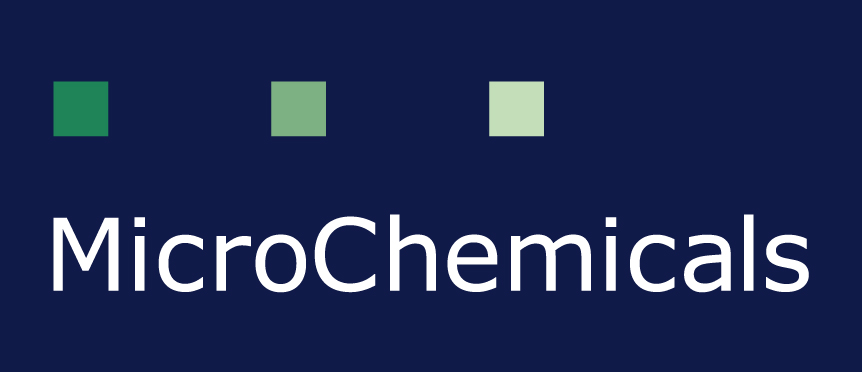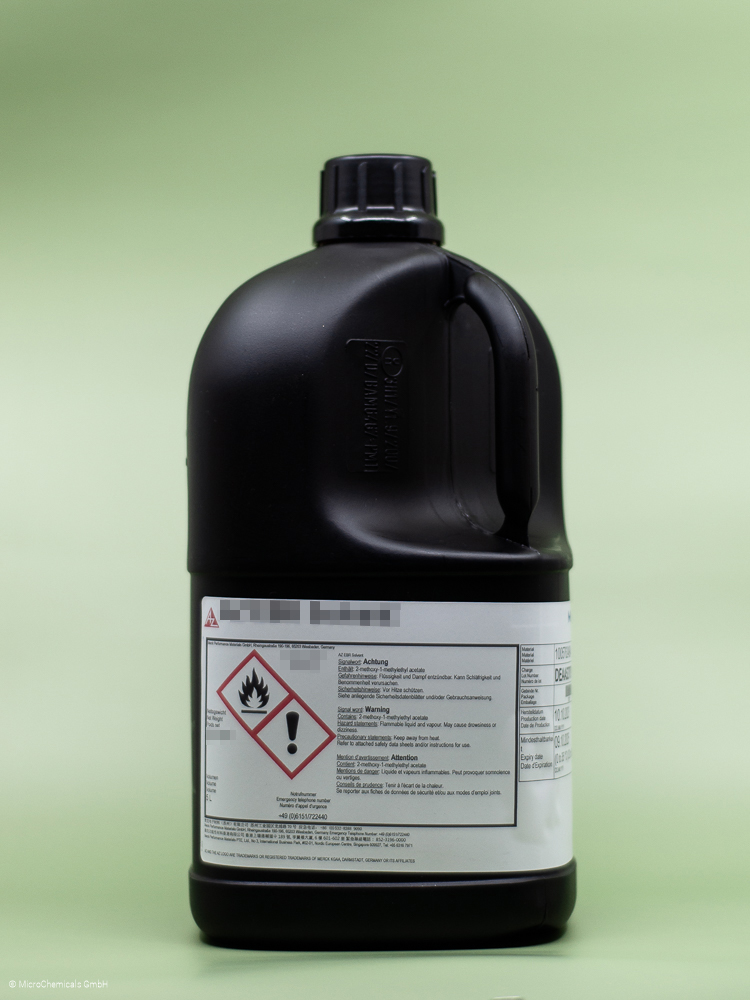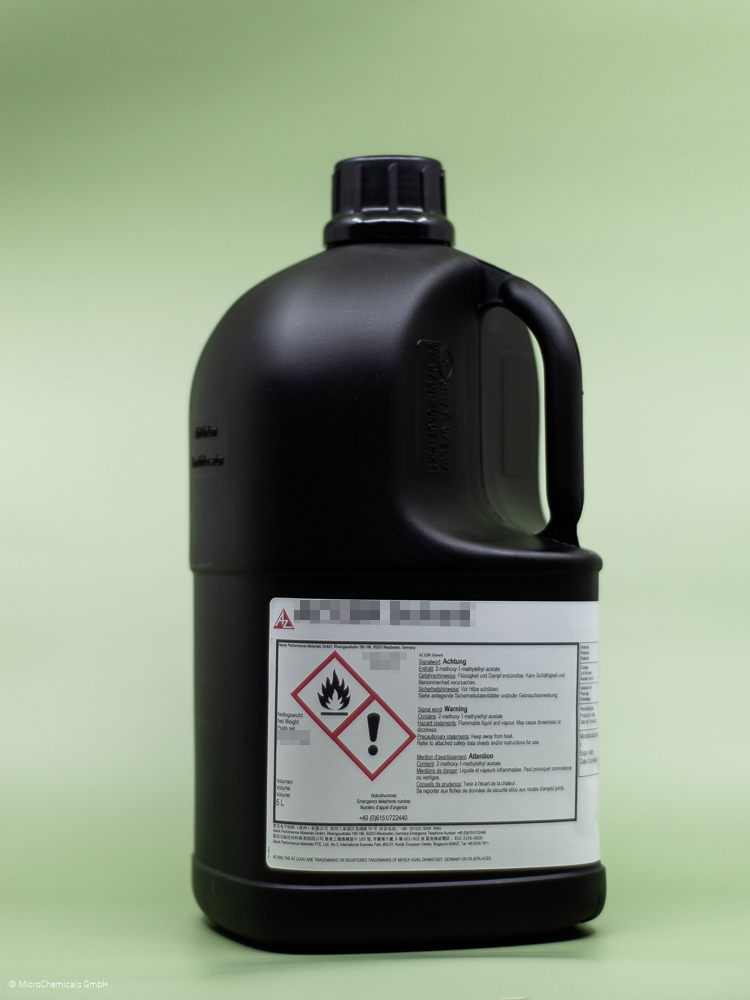REMOVER AND STRIPPER
Usually, photoresists are only used as a temporary mask for structuring steps. The last lithography step is therefore usually the removal of the resist mask. On the one hand, this should be done quickly and residue-free, but on the other hand it should not damage the substrate or the materials already deposited on it, which is not always an easy task to solve.
Solvent as remover
Acetone
Acetone is only suitable for removing photoresist coatings to a limited extent due to its high vapour pressure. If acetone is nevertheless to be used, we recommend rinsing the acetone contaminated with resist with isopropyl alcohol before the acetone dries again and forms streaks. We strongly advise against heating the acetone to increase the dissolving power due to the high vapour pressure and the associated high risk of fire.
NMP
NMP (1-methyl-2-pyrrolidone) is a very suitable solvent for removing photoresist coatings. The very low vapour pressure of NMP allows it to be heated to 80°C in order to remove even more cross-linked photoresist layers. As NMP is classified as toxic and teratogenic, alternatives such as DMSO should be considered.
DMSO
DMSO (dimethyl sulphoxide), which performs similarly well as a remover to NMP and is harmless in terms of occupational safety. We have already included DMSO in semiconductor quality in our range, please ask us for specifications and/or a sample if you are interested.
Alkaline media as remover
If the chemical stability of the substrate allows it and no special remover is to be used, aqueous alkaline media such as 2-3 % KOH or NaOH (= typical developer concentrates) can be used at room temperature to remove photoresist layers as an alternative. For cross-linked photoresist layers, higher concentrations and/or temperatures may also be necessary. However, it should be noted that many metals are etched at high pH values, and crystalline silicon is also attacked by highly concentrated alkaline media.
Alkaline and solvent-based ready-to-use strippers
AZ® 100 Remover
AZ® 100 Remover is an amine-solvent mixture and standard remover for AZ® and TI photoresists. To improve its performance, AZ ® 100 Rem over can be heated to 60 - 80°C to remove even stubborn photoresist layers.
TechniStrip® P1316 and P1331
TechniStrip® P1316 for alkali-sensitive substrates and P1331 for alkali-sensitive substrates are strippers with very strong dissolving power for
- Novolak-based lacquers (including all AZ® positive lacquers)
- Epoxy-based lacquers
- Polyimides, bonding glues
- Dry films
At typical application temperatures of around 75°C, TechniStrip® P1316 also dissolves highly cross-linked paints, e.g. by dry etching or ion implantation, in just a few minutes without leaving any residue. TechniStrip® P1316 can also be used in a spray process.
TechniStrip® NI555
TechniStrip® NI555 is a stripper with very strong dissolving power for Novolak-based negative paints and very thick positive paints such as
- AZ® nLOF 2000
- AZ® 15 nXT
- AZ® 40 XT
TechniStrip® NI555 was developed not only to remove cross-linked coatings, but also to dissolve without leaving any residue. This prevents contamination of the pool and filter by paint particles and skins, which can occur with standard strippers.
TechniStrip® MLO 07
TechniStrip® M LO 07 is a for alkaline sensitive materials like Al suitable, highly efficient remover for positive and negative resists used in the areas IR, III/V, MEMS, Photonic, TSV mask and solder bumping. TechniStrip® MLO 07 is compatible with Cu, Al, Sn/Ag, Alumina and a variety of organic substrates.
TechniStrip® NF52
The TechniStrip ® NF52 is a very efficient remover for negative varnishes (liquid varnishes as well as dry films). Due to its composition and special additives compatible with metals commonly used for BEOL interconnects or WLP bumping.
TechniStrip® Micro D2
TechniStrip® Micro D2 Versatile stripper for lift-off processes or generally for dissolving positive and negative varnishes. Its composition is aimed at improving compatibility with many metals and III/V semiconductors.


























